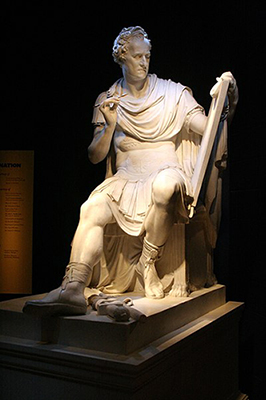An Independent People
By Elizabeth A. Fenn, Peter H. Wood, Harry L. Watson, Thomas H. Clayton, Sydney Nathans, Thomas C. Parramore, and Jean B. Anderson; Maps by Mark Anderson Moore. Edited by Joe A. Mobley. From The Way We Lived in North Carolina, 2003. Published by the North Carolina Office of Research and History in association with the University of North Carolina Press. Republished in NCpedia by permission. Revised December 2022 by Digital Heritage Library.
See also: The Way We Lived in North Carolina: Introduction; Part I: Natives and Newcomers, North Carolina before 1770; Part II: An Independent People, North Carolina, 1770-1820; Part III: Close to the Land, North Carolina, 1820-1870; Part IV: The Quest for Progress, North Carolina 1870-1920; Part V: Express Lanes and Country Roads, North Carolina 1920-2001
 Part II: An Independent People, North Carolina 1770-1820
Part II: An Independent People, North Carolina 1770-1820
When the shooting of the American Revolution died away, North Carolinians continued to work out the meaning of independence in the fabric of their daily lives. An Independent People describes how these efforts toward independence left their marks on public and private life.
Early republican North Carolina was no egalitarian utopia. Most black Americans were enslaved, American Indian people were more threatened than before the war, and all women remained subordinate to men. In the years after the Revolution, however, free North Carolinians wrote their first constitution, opened the first state university, and transformed their churches in a stirring revival of religion
By 1820, North Carolinians were facing the insistent reality that one cycle of adjustment would not be enough. The demands of independence would call for repeated bursts of wrenching transformations.
Chapter Contents:
The Forest and American Indian Tribes
Planters and Enslaved People
Towns in a Rural Society
Public Life in the Republic
Higher Powers and Higher Education
Keep reading - The Forest and American Indian Tribes | North Carolina 1770-1820 
Fenn, Elizabeth Anne, and Joe A. Mobley. 2003. The way we lived in North Carolina. Chapel Hill, NC [u.a.]: Published in association with the Office of Archives and History, North Carolina Dept. of Cultural Resources, by the University of North Carolina Press.
Image Credit:
Canova Washington. 2010. Photograph of original artwork. https://commons.wikimedia.org/wiki/File:Canova-Washington.JPG
21 March 2019 | Anderson, Jean B.